Executive Summary
Traditional IRA or Roth IRA? 401k or Roth 401k? With so many tax-preferenced retirement accounts out there, how do you know which one is best for you?
Johanna Fox-Turner, a fee-only financial advisor with 35 years of experience, joins the Wealth Summit to tell us how valuable a Roth IRA can be to our retirement portfolio.
KEY POINTS
-Traditional vs. Roth IRA
-How can I fund my Roth?
-How to set up a Roth
Depending on your income level, you might have the opportunity to deduct a traditional IRA on your tax form. However, the money does not grow tax-free, meaning when you take the money out all of the growth and income is taxable.
A Roth IRA, on the other hand, grows tax-free throughout the entire lifespan of the account. Unlike the traditional IRA, you don’t get a deduction for contributing money to the account.
Choose an account by deciding whether you want the tax break upfront or later on in life.
Many people say you should only fund a Roth if you’re in a low-income tax bracket, but Johanna believes the extra bucket of tax-free income later in life is valuable to everyone. She also recommends placing more aggressive securities in the Roth account in order to take advantage of the higher returns over time.
As retirees get older, they often get less interested in taking money out of their retirement accounts, electing instead to pass certain accounts on to the next generation. However, in a traditional IRA, you’re forced to take Required Minimum Distributions (RMDs) at the age of 70 1/2, which include tax payments.
Roth IRAs, in contrast, do not have RMDs, allowing the money to be passed on to your heirs. While the maximum individual contribution to a Roth is $5,500, you have the option to convert your traditional IRA into a Roth, which has no amount limitations.
It is best to do these Roth conversions in either a low-income year or a bear market. The down economy will allow you to convert the money at bargain prices.
Johanna suggests setting a Roth IRA up through a financial advisor, but it is pretty easy to set up on your own as well through an online custodian or broker. E-Trade, Fidelity, and Schwab all have solid funds, but ultimately Johanna advises picking the account and funds with the lowest fees.
Anyone can benefit from a Roth IRA, regardless of the tax bracket. If you want to contribute more than the limits allow, consider a conversion, which will also enable you to escape RMDs.
Finally, start early! The more time your account has to take advantage of compound interest the more money you’ll have at your disposal during retirement.
Enjoy my interview on Roth IRA’s with Johanna Fox-Turner!
SPECIAL NOTE: The SECURE ACT shortened the inherited IRA distribution rules from stretching over the beneficiary’s lifetime to 10 years maximum, and for 2020 the Roth IRA maximum contribution is $6,000 for those under 50 and $7,000 for those 50 or older.
Greg: Hello Wealth Masters, my name is Greg Phelps, and I am your host to the Wealth Summit. Our mission here at the Summit is simple, we want to educate and empower you with actionable tools, tips, and tactics to help you grow, protect, and maximize your wealth.
And part of that maximization of your wealth is the Roth IRA, which is a very fun topic and we’ve got an expert in Roth IRAs today, Johanna Fox Turner!
Johanna, are you ready to help us master our wealth?
Johanna: Yes, I sure am!
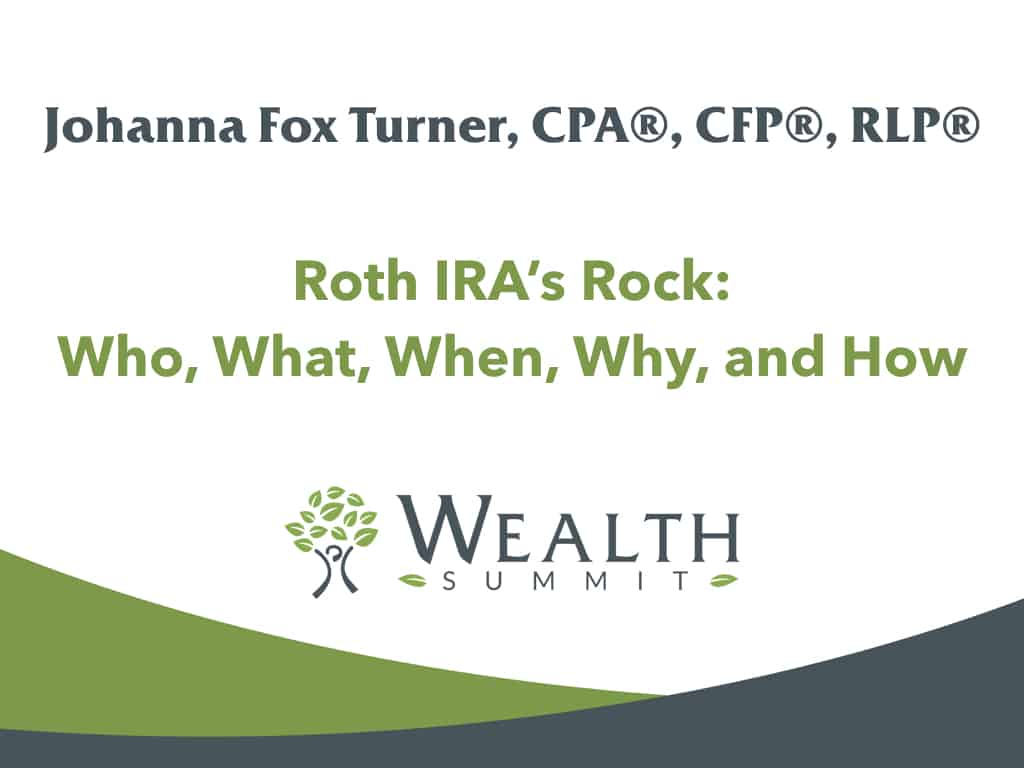
Greg: All right, so a little bit about Johanna. Johanna Fox Turner is a fee-only certified financial planner and a CPA who has been a financial advisor for 35 years. She’s a partner in two firms: Fox & Co CPAs, and Fox & Co Wealth Management with offices in Mayfield and Paducah, Kentucky.
Johanna and her team serve a virtual network of physician and business owner clients and retirees throughout North America. They are committed fee-only advisors, no sales and no commissions, and services are all under a flat fee model. Johanna is a moderator of and frequent contributor to the white coat investor blog and forum, the most popular physician’s financial site on the internet.
In her spare time, you will find her experimenting with new recipes, working out, and visiting her five grandchildren in Nashville, Tennessee.
Johanna, that’s a little bit about yourself so take a second to fill in any blanks I might have missed.
Johanna: Well, this is pretty much right now is seven days a week job that I love. I absolutely love it.
Greg: All right, well it certainly keeps us both busy! So we’re going to dig right in and get to the heart of the matter we’re going to discuss which is Roth IRAs.
So very first I want to lay a foundational level of education here and I want to talk about what is a Roth IRA relative to a regular IRA.
What is a Roth IRA?
Johanna: Okay, so I differentiate Roths from regular by calling them traditional IRAs or TIRAs. So a traditional IRA is an IRA that you either deduct or you can’t deduct depending upon your income, but it does not grow tax-free. So when you take the money out, all of the growth and income is taxable.
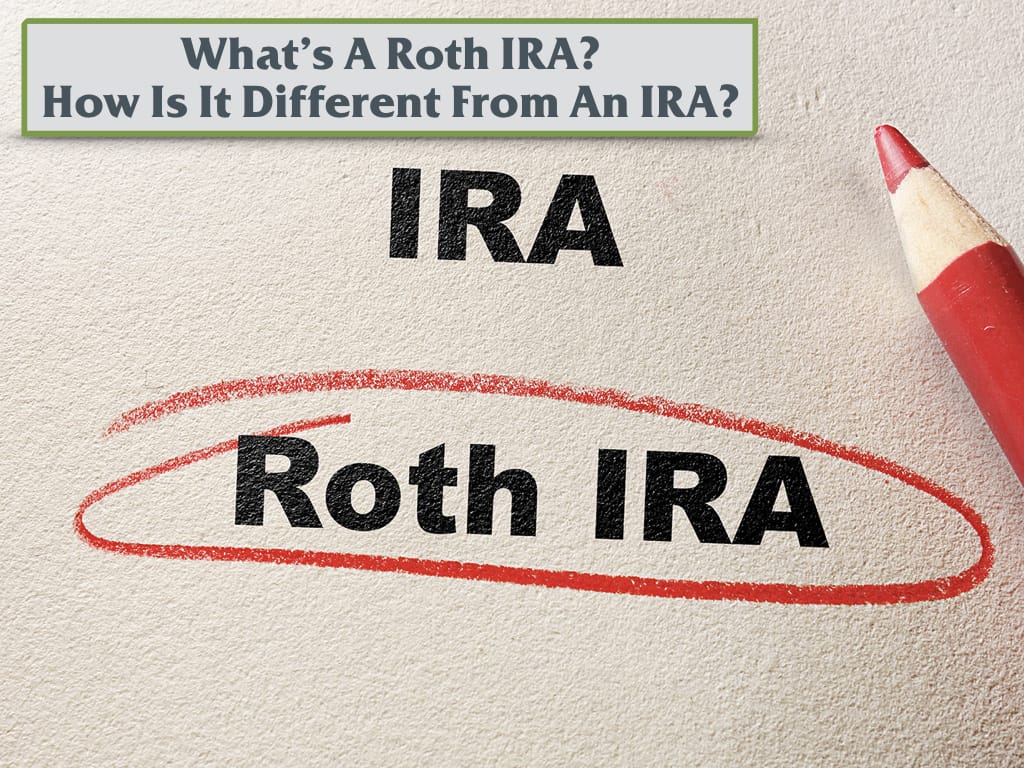
With the Roth IRA, you don’t deduct in the beginning. However, all of the growth and income is tax-free forever.
Greg: Tax-free forever you mean?
Johanna: Yes.
Greg: Okay. So the Roth IRA is tax-free forever, but you don’t get a deduction putting money in, and the IRA you may or may not get a tax deduction putting money into it, but it’s going to grow tax-deferred and then it’s taxable as income when it comes out?
Johanna: Exactly.
Greg: Okay, so there are two different things at play here. One of them is if you want the tax break upfront, or do you want to forgo that and get that tax free distribution later?
And the next question I have is who should actually own a Roth or who should find a Roth IRA?
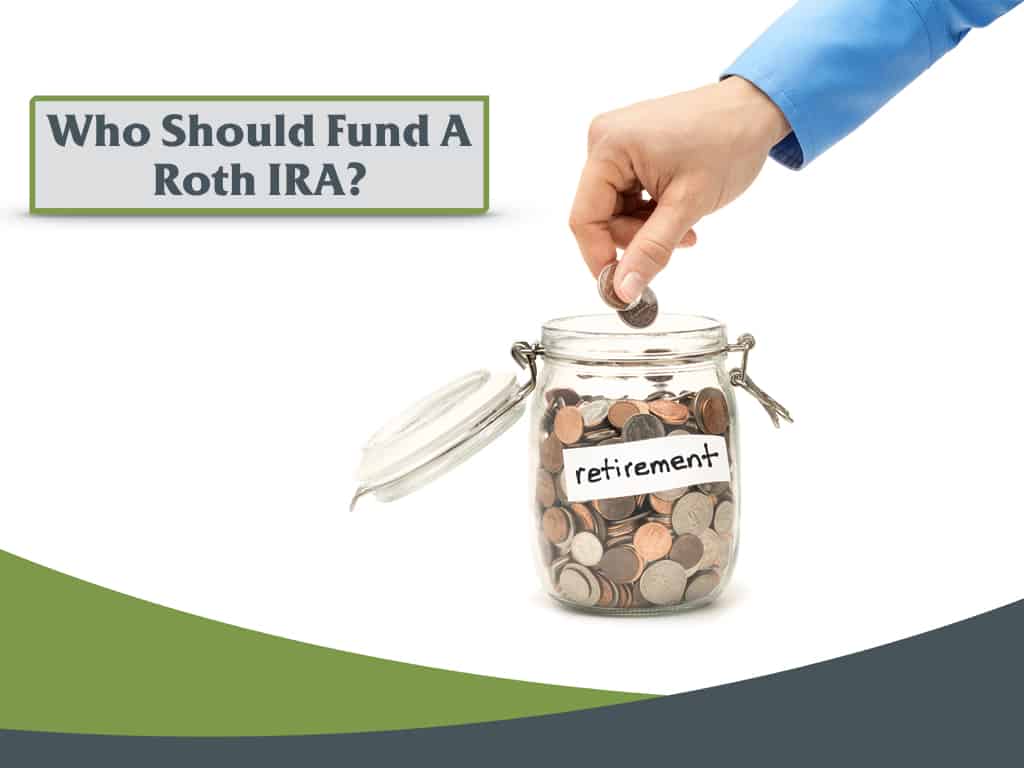
Johanna: That’s a good question. You may hear that you need to only fund a Roth IRA when you are in a low-income tax bracket, but at Fox and Company Wealth Management, we believe that everybody should fund a Roth IRA just to have that extra bucket of tax-free income at a later point in their lives.
Okay, and so you don’t put an income bracket or tax bracket stipulation on it, say if you’re in the 28 percent bracket, don’t fund it from the pre-tax.
Greg: Do you say everybody should have a Roth IRA?
Johanna: Well, I believe if you’re in a higher tax bracket first, you fill out your tax-deductible contributions to your 401k, 403b, but then you need to have a Roth IRA as part of your retirement strategy. And where the tax planning comes in is when you contribute to the Roth IRA or convert funds to the Roth IRA.
So there’s a little bit of finesse there.
Greg: Okay. Alright, so we’ve got a couple of different factors at play here and everybody’s a little bit different but everybody should, and I agree with you with this, you should have some tax diversification which is what we’re talking about.
We diversify your investments, why not diversify your taxes?
Johanna: Exactly and a little bit of planning can really help increase and grow your wealth throughout your life.
When Should You Fund A Roth IRA?
Greg: Okay. So let’s just say I’m on board Johanna and I want to fund a Roth IRA, well, when should I fund it?
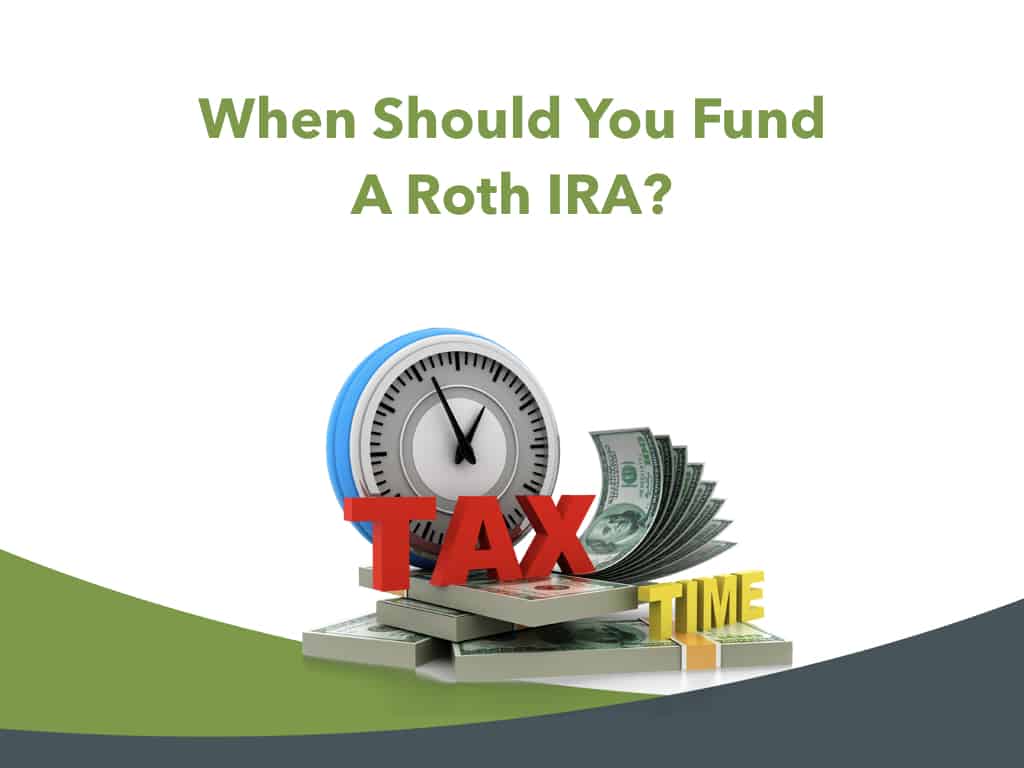
Johanna: Well, you can fund a Roth IRA as early as you have earned income like a traditional IRA. You’re limited to $6,000 a year (for 2020) of earned income that you can start that for your teenage child when they are babysitting, dog walking, whatever that they can do to earn income and it’s good for them too.
I think kids need to have a job and be productive! But if you haven’t done that when you’re young you can start when you are in college or out of college and starting to start your career.
So when I put my children to work and they have earned income, they can actually fund a Roth IRA.
Yes, and what I typically recommend is you don’t take their money away from them, because they worked so hard to earn, but you may say okay for every dollar you put in, I’m going to match that, or you just work enough to get enough to fund a Roth IRA $1,000 to $6,000 and then the parent can fund it. Which is kind of good estate planning too!
Greg: Yeah, and that’s probably one of the most valuable gifts you could ever give a child is to fund that Roth IRA while they’re young and when they retire it’s going to be a nice chunk of tax-free money.
Johanna: Yes, correct.
How Should You Invest Your Roth IRA?
Greg: So Johanna since Roth IRA and a regular IRA are different in their tax consequences. Do we invest in the same or do we invest them differently? What’s your preference?
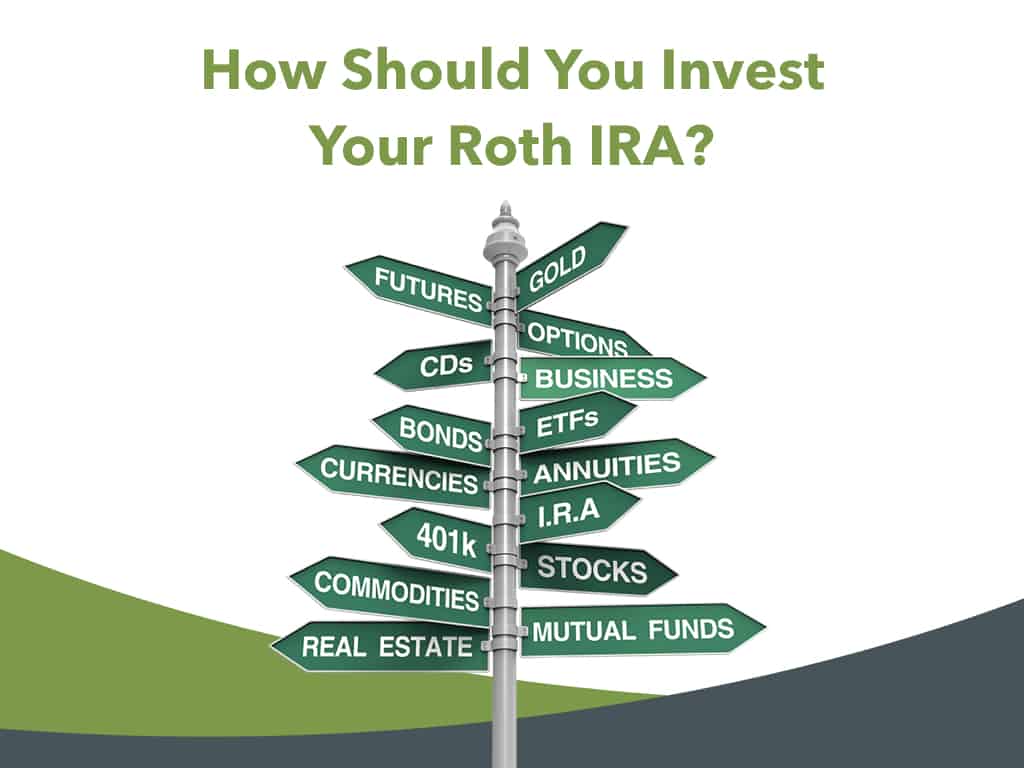
Johanna: Well, I recommend if you have different investment strategies, which we typically don’t here at Fox and Company, but that you’re most aggressive growth strategy needs to be inside the Roth IRA because that’s where you really want to funnel money that’s going to grow and build that tax-free stream of income.
Greg: Okay. So if I assume most of your clients probably have some mix of stocks and bonds, so let’s just say there is a 60% stock investor and a 40% bond investor, what you’re saying is that if you’re going to differentiate your Roth IRA, your IRA, your taxable, you would take that stock allocation and put that in the Roth IRA first because you want more growth there.
Johanna: Yes, exactly.
Greg: And take advantage of those higher returns over long periods of time as well.
Johanna: Exactly. As long as you have a properly diversified equity portfolio, I wouldn’t recommend taking a Roth and investing it in your friends’ business, but some diversified mutual funds that you can just set it and forget it and rebalance occasionally and let them grow for the long term.
Greg: Okay, but they are more aggressive investments.
Johanna interestingly enough, I saw just this week, a client brought in, and they had they’re moving over from another firm, and this firm had put in their Roth IRA an ill liquid limited partnership that had done very poorly. And I just felt horrible for her because I would never do that.
Johanna: I wouldn’t either.
Greg: So pro-tip out there Wealth Masters, your Roth IRAs, if you’re going to invest them differently, that’s where you want your more aggressive longer-term mutual funds and those strategies in there.
So even within that stock allocation, I suppose if you’ve got smaller companies which are more aggressive than the larger ones, you would probably even put the smaller companies in the Roth first, right?
Johanna: Yes, I would. Small-cap growth, small-cap value, some international some mutual funds in that run on the long term.
Greg: Yeah, and that’s key because when you get to retirement, you might want to start drawing off of that Roth IRA, maybe you change your investment strategy.
Johanna: Yeah, and in retirement then you’ve got to look at your tax strategy. Do you need the tax free income then, or do you want to let it grow for the future? Maybe pass it on to the next generation?
When Do You Need A Roth IRA?
Greg: Well, let’s go ahead and talk about that retirement situation. So, when do you actually need your Roth IRA? When you’re going to use it in the context of your financial plan?
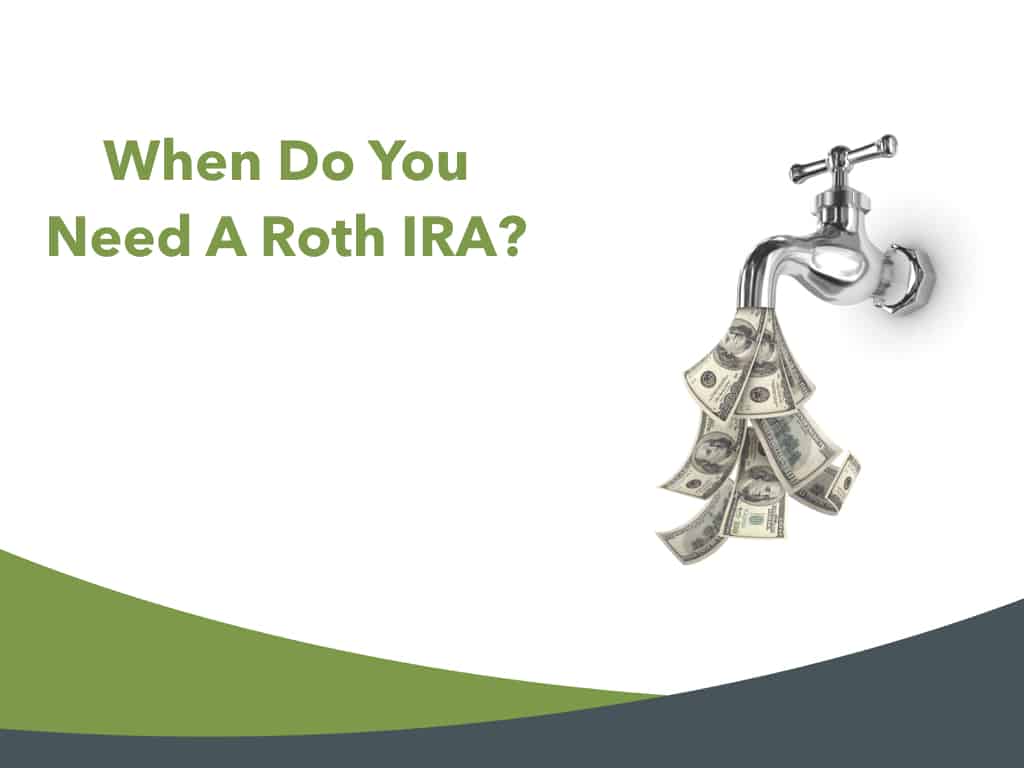
Johanna: Well, I’ve talked about estate planning. We love to see clients who want to invest their Roth IRAs for the next generation and grow that big account so that their children and grandchildren can get a huge bucket of tax-free income from them no matter what tax bracket they’re in. Under the newly adopted SECURE ACT, you have up to 10 years for the heirs to distribute their inherited IRA accounts (both Roth and pre-tax).
And one thing I’ve found is that people, as they get toward age 70 and a half and they have their retirement plan in order, they get less and less interested in taking money out of their retirement accounts because usually, they have a plan so that they’re doing quite well.
Greg: Okay. So explain real quick for the viewers out there what is the required minimum distribution?
Johanna: Good question. So with a typical IRA a traditional when you reach age 70 and a half you are required to begin emptying that account over the rest of your life and paying taxes on it whether you want to or not the IRS requires that.
Greg: So I’ve got my regular IRA which maybe was a rollover from a 401k, which is a very common situation. When I turn 70 and a half, the IRS says hey, wait a second. You can’t leave this in there forever. We want our pound of flesh essentially. They want their taxes. So you’ve gotta pull a certain amount out.
Johanna: Yeah. You got the deduction when you were young and when you were working in your career, now they want you to pay the piper and start taking that money out and paying the IRS.
Greg: And you’re saying with the Roth IRA there’s no requirement for this?
Johanna: That’s one of the beautiful things about a Roth IRA, is you can let that money grow throughout your life and even leave it to your heirs, though they do have to pull it out over the next 10 years.
Greg: And I’m just curious when you say leave it to your heirs, well let’s say I’ve got my Roth IRA and I pass on I’m long gone. What are the rules on them with my Roth IRA? Do they have to take it out all immediately or is it over a period of time?
Johanna: Prior to 2020 they could take it out over their lifetimes. Under the newly adopted SECURE ACT, you have up to 10 years for the heirs to distribute their inherited IRA accounts (both Roth and pre-tax).
Greg: Okay. So that means that they’re going to have a stream of income over 10 years and their account statements going to have my name on it. That looks kind of cool.
Johanna: Yeah. I love that.
Greg: Yeah, they’ll be thinking about me forever and thanking me. Yes, especially because who knows what their tax rates are going to be but I’m hoping that they’re in a higher tax bracket than I am. You know, just because that will mean that they’re doing well. So this will be a really powerful tool.
Johanna: I mean imagine when you retire you’re going to be in the 15%, 20% and 28% bracket 20% for capital gains, and you really don’t need to take that tax free income so much then and your grandchildren and children, hopefully, are very successful and they’re established in their careers and just to have that tax free income is a real blessing.
Greg: Alright, so that’s a great strategy and sounds like you like to use this for estate planning as well. I’m kind of curious. Do you find that even though when somebody is listed at 75 or 80 and they could make some money out of that Roth IRA that they kind of don’t want to because of that estate planning benefit?
Johanna: Exactly. And what I see people doing it as they get closer to that age converting their regular IRAs that are going to be taxable over to a Roth IRA, paying some taxes, you know doing it in a period of years so that you are strategically planning for taxes and then lowering the required minimum distributions for when they reach age 70 and a half.
Greg: Okay, and is there a gap or an age bracket that you would say that these things are really popular or they’re really beneficial to people?
I mean, is it early in retirement? Is it later as far as converting an IRA over?
Greg: Well, there’s two times one in a low-income year. Obviously, that’s going to be good because you’re going to pay taxes at a lower rate. But number two is when we’re in a Bear Market or correction and you may be in a high tax bracket, but you get to convert that money at bargain prices.
So in the context of that idea, so let’s just say your IRA is a hundred thousand dollars and we’re in a Bear Market and the market drops 25 percent now it’s $75,000.
So all of those share prices in your IRA are compressed you’re saying that’s a good time to do a conversion because they’re cheap. So you might take out 75,000 and convert it into Roth when you know, who knows a year ago it might have been a hundred thousand you would have paid a tax on an additional 25,000. That’s I think the concept right?
Johanna: That’s exactly the concept and Roth IRA conversions are one of the best tax planning strategies I know of. Unfortunately, you used to be able to undo the conversion, but no longer.
Greg: Exactly or you can say you have $10,000 of income in a higher tax bracket than you planned.
How Much Should You Put Into A Roth IRA?
Greg: Okay. So Johanna, let’s talk about this. How much should I put into my Roth IRA? There’s got to be some limits, right?
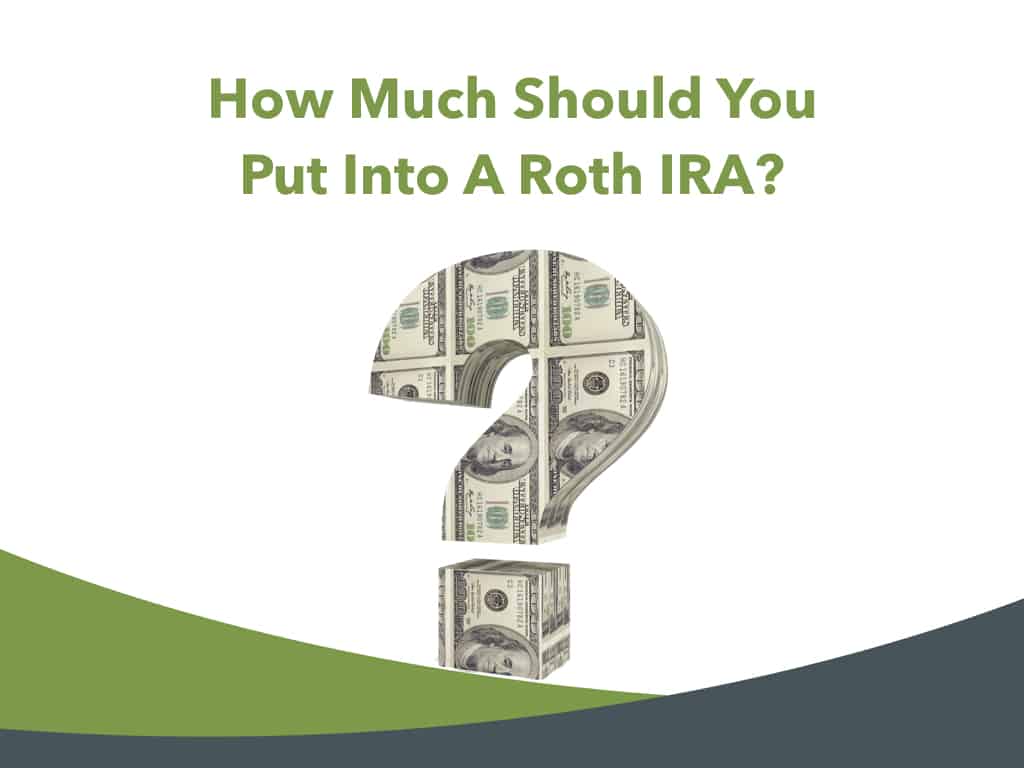
Johanna: Well, there are limits for contributions, so you can contribute $6,000 per year. If your spouse doesn’t work you can do a spousal Roth IRA, but the big advantage comes from these conversions throughout your life because you can convert any amount you want as long as you have an IRA or a 401k to roll out and put in that Roth.
Greg: So there are no limits on the conversion. I can convert my entire IRA if I wanted to and it could be a half-million dollars?
Johanna: Oh absolutely, and a lot of people get mixed up on this because before 2010 there were limits and if you made over a hundred thousand dollars, you couldn’t convert it all.
Greg: Okay, so that’s gone away and now there are no rules as far as I can convert the whole thing?
Johanna: Yes, I think the IRS decided they’d rather have that tax money upfront and go ahead and it’s a free-for-all convert what you want and just pay us.
What if I can’t contribute to a Roth IRA?
Greg: Well, the IRS is typically short-sighted, but what if I okay so I can convert but what if I can’t contribute I want to put in that $5,500 but I make too much money because there are income limits so what happens then?
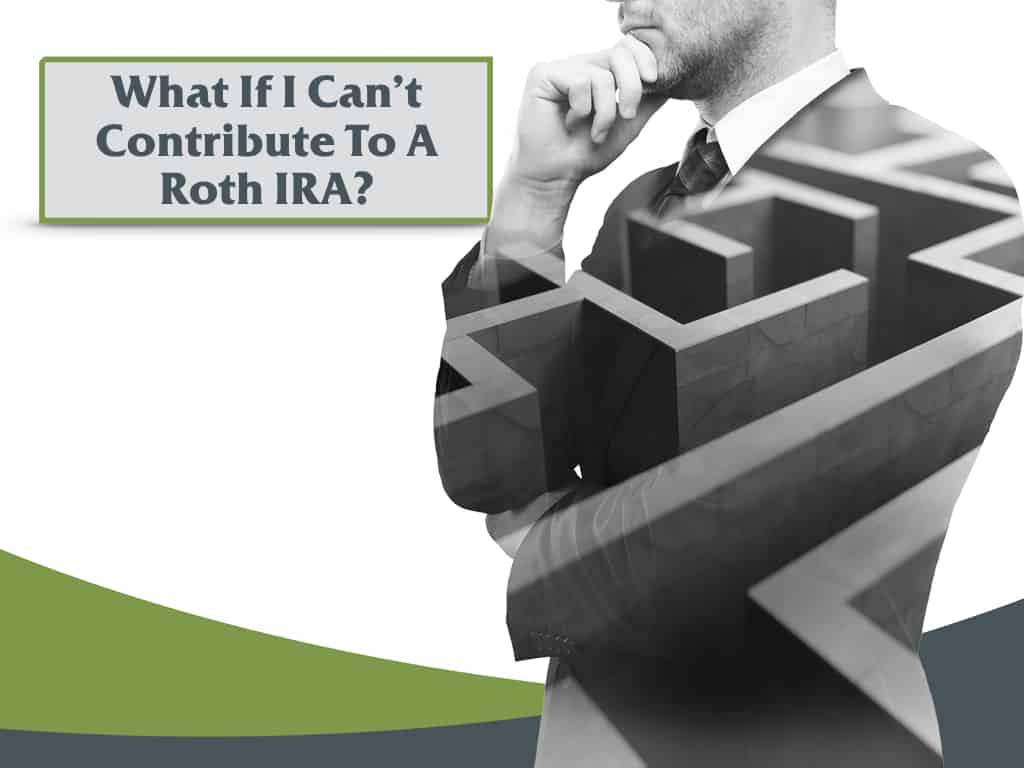
Johanna: Oh, yes, if your adjusted gross income is over $192,000 (married filing joint) you’re prohibited from a direct contribution to a Roth IRA.
However, there is a technique called a Backdoor Roth IRA and to do a backdoor Roth IRA you contribute to that traditional IRA I was talking about, but you do not get to deduct it then wait a few days and convert the traditional IRA to a Roth IRA and you have the same end result.
Greg: Okay. So you fund an IRA, you don’t take a deduction and then you convert that IRA into a Roth IRA and essentially it’s like you just funded the Roth IRA?
Johanna: Exactly. It just takes an extra step. Okay, so that’s the back door Roth IRA.
Greg: Now, are there any limits? I mean what if I’ve got other IRAs lying all over the place and I’ve got different custodians and so forth and this one I do is non-deductible. But if I convert it, are there any tax issues with that?
Johanna: Yes, I’m glad you mentioned that if you have pre-tax IRAs in your name, you’ll have to pay what’s called a pro-rata tax on that conversion. So what we recommend in that situation is number one, if you have a side business that you have some earned income, you set up a solo 401k or you see if your current 401k or 403b that your employer will allow you to roll those IRAs into your work 401k or 403b. Not all plans allow this but in my experience most do.
Greg: Okay, and so the purpose of that would be so I don’t have all these scattered IRAs lying around because of that pro-rata rule?
Johanna: Yes, and the pro-rata rule only counts for IRAs. It does not count for 401k’s. So that’s why your goal is to get that money into the 401k, there’s no tax effect you roll directly from a pre-tax into a 401k. You’re not going to pay any taxes and then you have that shelter around your IRA with the 401K and you can go ahead with the Backdoor Roth.
Greg: Okay, so then you would go fund the IRA, you don’t get a deduction and then you convert it. But the key is it’s kind of like that pro-rata rule. It sounds to me like a cup of coffee and once you put the cream in it, it’s just mixed in and once you pour that out of the IRA, you know, you convert that cup of coffee IRA over into Roth.
It doesn’t matter whether it was pre with you got the deduction on it upfront or you didn’t get a deduction. The IRS says well a portion of that you got a deduction on some has to pay prorated.
Johanna: Yes. That’s exactly right.
Greg: Okay, so that’s a that’s a little pro tip out there, if you’re going to do a back door Roth IRA make sure it is your only IRA, if you’ve got other IRAs lying around get them transferred into your 401 k because you if you do convert you can’t just convert an IRA account. You have to convert the IRS looks at it as one IRA is all IRAs in one.
Johanna: Yes, exactly.
How do you start a Roth IRA?
Greg: Right. So, Johanna, I’m on board. I want to do this. How do I start a Roth IRA?
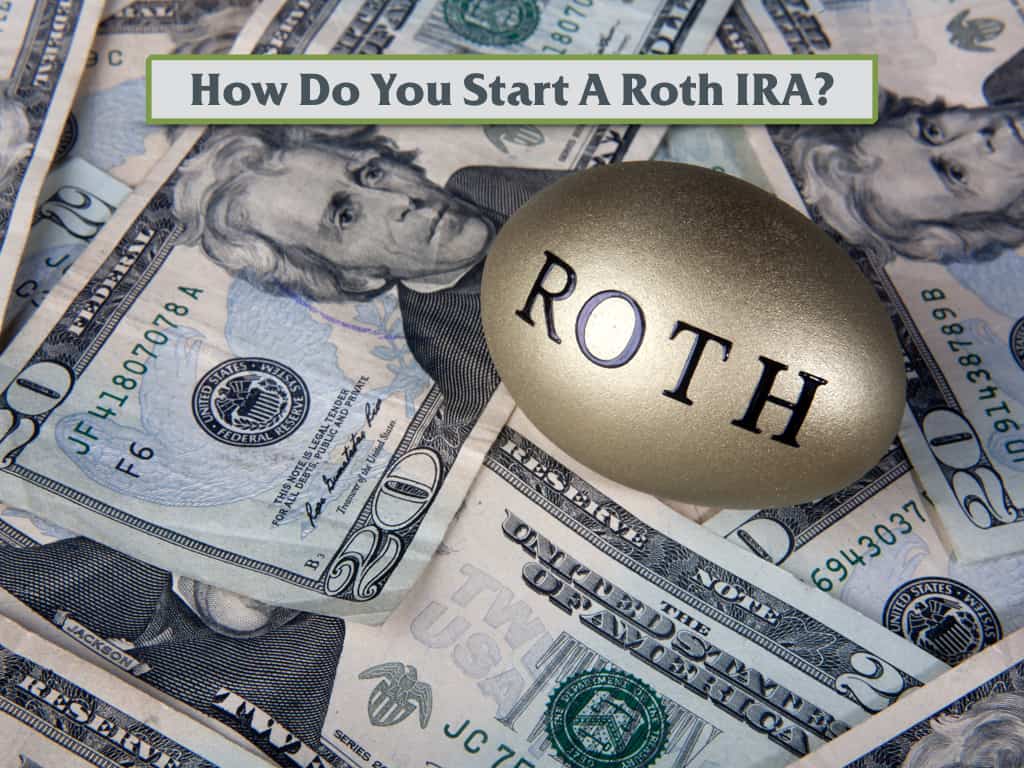
Johanna: Well, you go to your friendly financial advisor and have them set it up for you or a Roth IRA is quite easy to set up on your own.
So you just go to an online custodian broker and fill out the forms online. You can probably get it done in 15 minutes or less.
Greg: Okay, are there any custodians that you prefer if people wanted to do it themselves?
Johanna: There are a lot of good ones. I like E-Trade, Fidelity Schwab. What you need to do is look at the fees that they charge for buying mutual funds so that you’re paying the lowest price possible.
Greg: Okay, and I like a Vanguard for some of those as well when we do hourly consultations. We send them to Vanguard and just say go log in over.
Can I start a Roth IRA through work?
Okay. So what if I want to do a Roth IRA through my 401k can I do that? Do they have that option?
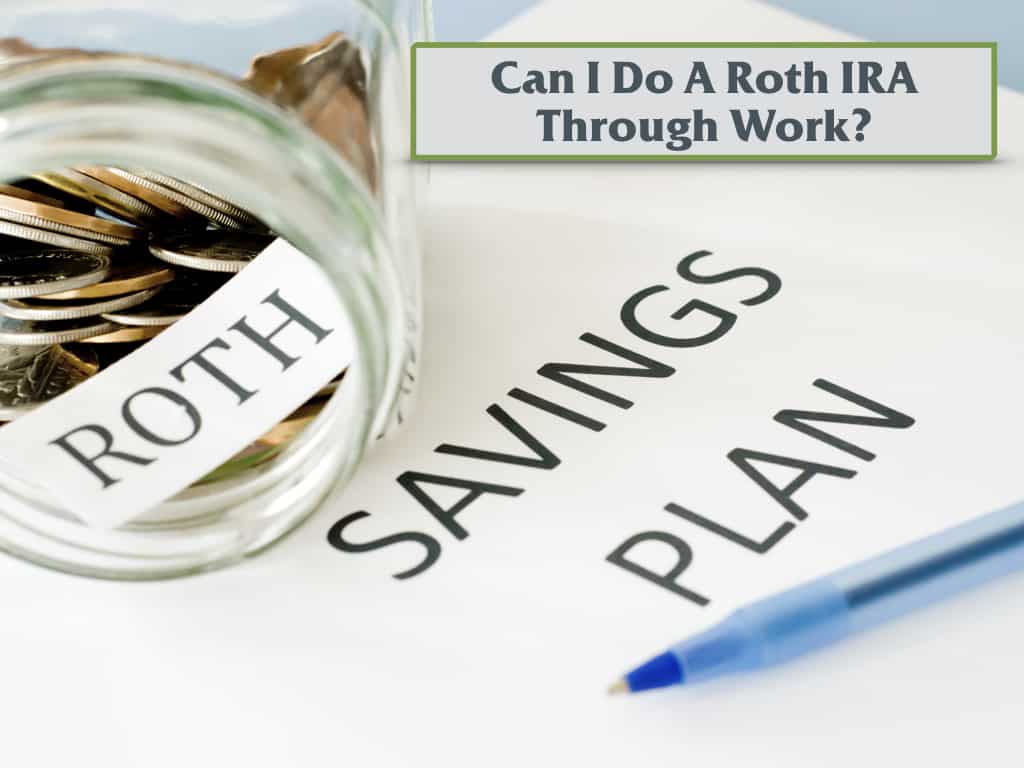
Johanna: Oh, yes a few years ago 401k’s started a Roth option and that doesn’t mean all 401k’s allow this, you have to check with your employer, take a look at the SPD or summary plan description, and see if that’s allowed and you can even divide your contribution between part Roth and part deductible IRA and so you’re getting into some tax planning there.
How much deduction do I need and how much do I want my Roth to have in a Roth that will grow tax-free. Now one little thing to know is if you get an employer match that does not go into the Roth that always goes into your pre-tax account.
Greg: Okay, so when you match that the employer gives me, you know, sometimes they’ll give you 50 cents on the dollar up to a few percent or something like that. That would go pre-tax always no matter what because they’re getting the deduction; the company is.
Johanna: Yes.
Greg: And any profit-sharing I suppose would be pre-tax as well. But you can actually out of your paycheck in your Roth 401k fund that Roth component.
Johanna: Exactly. So some people aren’t even aware that their employer offers this so it’s very important to know what your SPD your, summary plan description, says and even if your employer doesn’t offer it, maybe lobby them to add that Roth option because it’s not going to cost them anything else to allow employees to contribute to a Roth IRA.
Greg: Right and especially if you’re in a lower tax bracket, I mean obviously we should all have a Roth IRA. But especially if you’re in a lower tax bracket, it’s just, you know, a huge opportunity missed if you don’t have that Roth contribution.
Johanna: Kind of what they call a no-brainer!
Greg: It is a no-brainer and you know anecdotally I do have you know, a few 401ks we manage and once for some reason one of them they just refuse to do the Roth option. They feel it’s too complex for the participants and I just fought and fought and fought.
Okay. So Johanna, let’s go ahead and bring it home. I like to give all the Wealth Masters out there some actionable items that they can take away and learn from immediately.
So let’s go ahead if there’s nothing else that we’ve learned from this discussion. Go ahead and give us your key action items and takeaways.
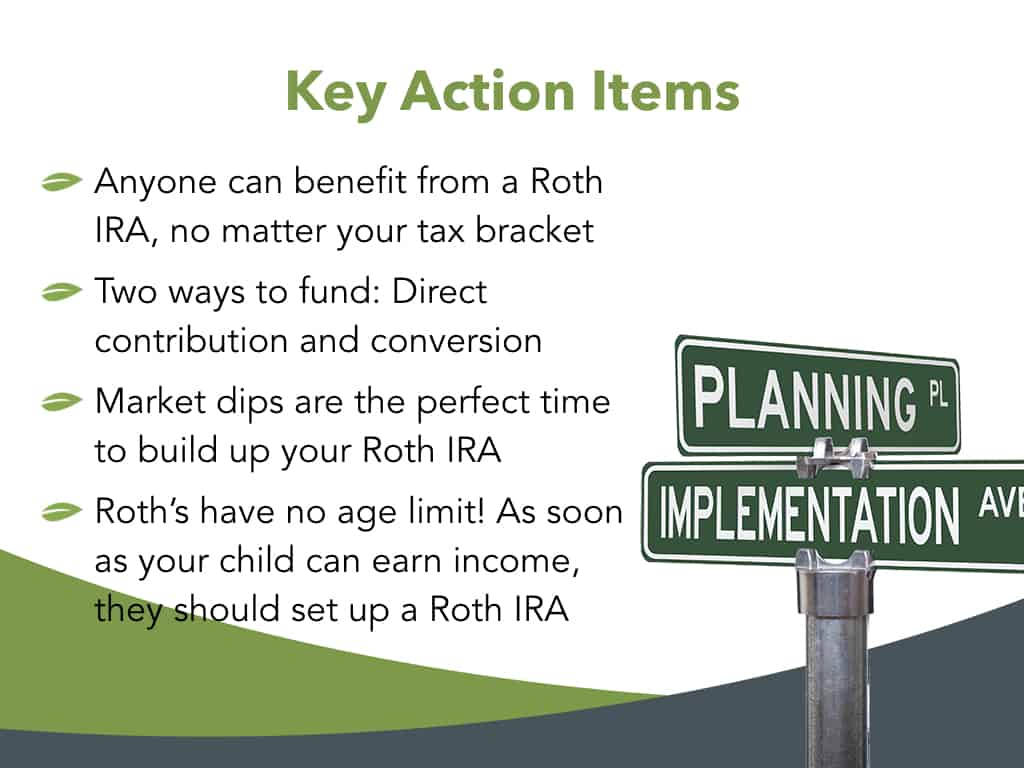
Johanna: Okay. First of all, anybody can benefit from a Roth IRA. It’s not just for people who are in the lowest income brackets. You’ve got to think far out into the future.
What will my money grow to, what kind of tax-free income are we going to need in retirement, or do I want to leave for my children and grandchildren.
Number two, you can get money in a Roth and two different ways. By directly contributing or the Backdoor Roth and by converting from a pre-tax Ira into a Roth IRA.
Number three, market dips are a great time to build up your Roth IRA and to convert money Investments while they’re on sale at bargain prices.
Number four Roth IRAs have no age limit you can begin contributing as soon as you start earning money and as long as you’re earning money later on.
And one more, when you’re investing in your Roth IRA invest for the person who’s going to eventually benefit from it. So if you invest when you’re 60 and you’re using the traditional bond, stock ratio, just because that’s what you’ve been told you’re supposed to do.
If you’re not the one that’s going to use that Roth and your grandchildren are, then invest for them. They’ve got a lot longer time frame.
Greg: So you would invest it may be kind of earmark that Roth IRA with the really aggressive investments, even if it doesn’t fit with your plan?
Johanna: Yes, exactly.
Greg: All right, that’s a great little pro tip there I love it and I thank you very much.
All right, Johanna. So if the Wealth Masters out there if they want to reach out to you to get more Roth IRA information or for questions or comments. How would you prefer that they seek you out?

Johanna: Email me johanna@foxwealthgmt.com, and our phone numbers to 270-247-0555.
Greg: All right, Johanna. Thank you very much Roth IRAs do rock, and I appreciate you enlightening us and some of those little tips and tools and strategies.
So Wealth Masters, either you control your money or it will control you. The Roth IRA is a great tool for retirement planning to boost your ultimate lifetime wealth and to reduce your taxes.
So definitely consider that and build that into your plan, Johanna. Thanks so much for your time today.
Johanna: Thank you, Greg. It’s been a pleasure. I appreciate it.
Greg: All right, this is Greg Phelps for the Wealth Summit, signing off.
Common Roth IRA questions
A Roth IRA is a type of retirement savings account where the saver contributes money after-tax and does not get a tax deduction. The Roth IRA grows tax-deferred and is later withdrawn with no taxes owed.
Generally, a Roth IRA should be invested more aggressively than a pre-tax investment account since the money can be withdrawn tax-free in retirement. If an investor as a 50% stock and 50% bond allocation, the Roth IRA should be allocated to stock first and bonds second.
